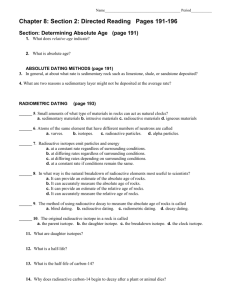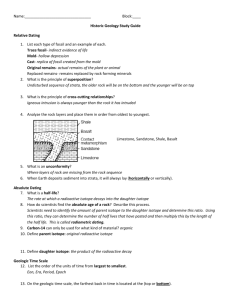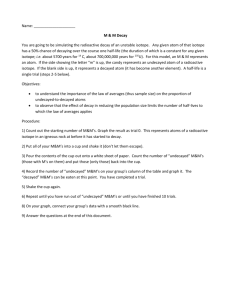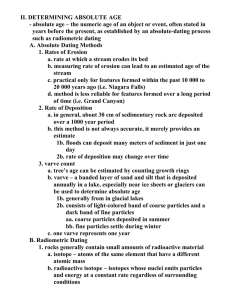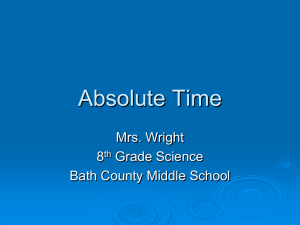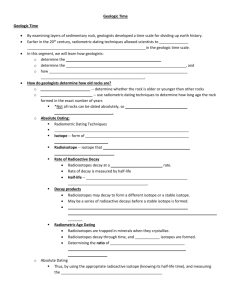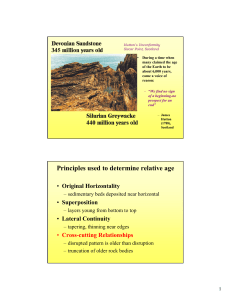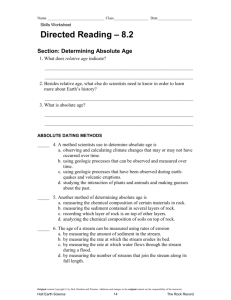directed reading absolute dating
advertisement
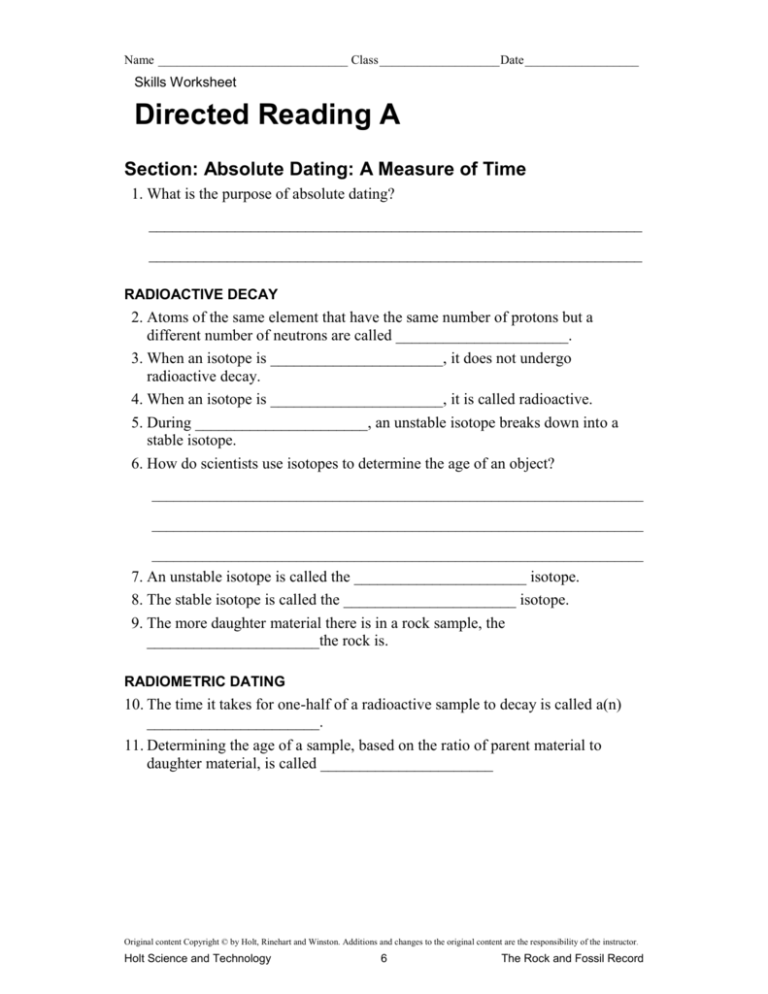
Name ______________________________ Class ___________________ Date __________________ Skills Worksheet Directed Reading A Section: Absolute Dating: A Measure of Time 1. What is the purpose of absolute dating? _______________________________________________________________ _______________________________________________________________ RADIOACTIVE DECAY 2. Atoms of the same element that have the same number of protons but a different number of neutrons are called ______________________. 3. When an isotope is ______________________, it does not undergo radioactive decay. 4. When an isotope is ______________________, it is called radioactive. 5. During ______________________, an unstable isotope breaks down into a stable isotope. 6. How do scientists use isotopes to determine the age of an object? ____________________________________________________________________ ____________________________________________________________________ ____________________________________________________________________ 7. An unstable isotope is called the ______________________ isotope. 8. The stable isotope is called the ______________________ isotope. 9. The more daughter material there is in a rock sample, the ______________________the rock is. RADIOMETRIC DATING 10. The time it takes for one-half of a radioactive sample to decay is called a(n) ______________________. 11. Determining the age of a sample, based on the ratio of parent material to daughter material, is called ______________________ Original content Copyright © by Holt, Rinehart and Winston. Additions and changes to the original content are the responsibility of the instructor. Holt Science and Technology 6 The Rock and Fossil Record Name ______________________________ Class ___________________ Date __________________ Directed Reading A continued 12. After every half-life, what has happened to the parent material in an object? _______________________________________________________________ _______________________________________________________________ _______________________________________________________________ TYPES OF RADIOMETRIC DATING Match the description of the type of radiometric dating with the correct term. Write the letter in the space provided. _____ 13. used mainly for dating objects that are younger than 50,000 years _____ 14. used mainly for dating rocks older than 100,000 years a. potassium-argon b. uranium-lead c. rubidium-strontium d. carbon-14 _____ 15. used to date rocks older than 10 million years; half-life of isotope is 4.5 billion years _____ 16. used to date rocks older than 10 million years; half-life of isotope is 49 million years Original content Copyright © by Holt, Rinehart and Winston. Additions and changes to the original content are the responsibility of the instructor. Holt Science and Technology 7 The Rock and Fossil Record
